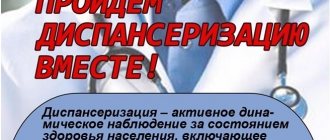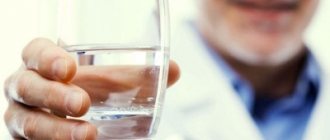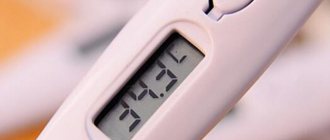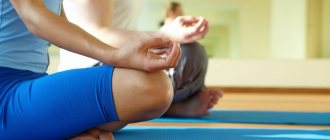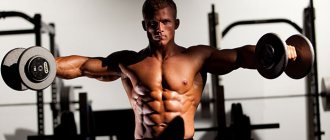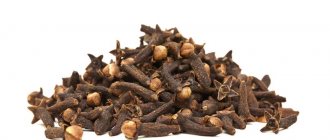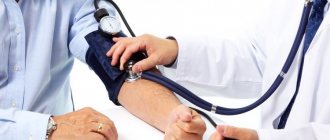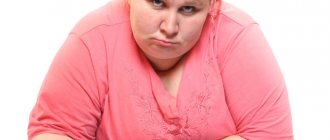One of the additional treatment methods for hypertension is physical therapy, which allows patients to restore their vitality. In combination with conservative treatment and diet therapy, moderate exercise will help normalize blood circulation, cardiac activity, and also reduce the risk of complications. Experts have developed special exercises for hypertension that prevent excessive stress on a weakened body. Before starting physical therapy, patients should familiarize themselves with the methods, indications and contraindications for exercise.
What is hypertension and why is it dangerous?
Blood pressure (BP) values show how much pressure the blood exerts on the walls of blood vessels when the heart contracts and relaxes.
If the values on the tonometer show figures of 140/90 mm Hg or more, this indicates an increase in blood pressure, and if this condition persists for a long time, it indicates hypertension [1]. Hypertension can occur independently or develop as a consequence of other pathologies - in this case, secondary hypertension develops. If the cause of high blood pressure cannot be eliminated, the disease is chronic and, without proper treatment, constantly progresses [1]. The danger of hypertension lies not in the fact of increased pressure, but in the consequences of this condition. Pathology significantly increases the risk of dangerous cardiovascular disorders - cardiac failure, arrhythmia, heart attack and stroke [2]. Also, against the background of a prolonged increase in blood pressure, damage to the heart, brain structures, kidney vessels, and eyes occurs [1]. A sharp rise in pressure (in some cases - up to 200/120 mm Hg and above) is dangerous due to the risk of a hypertensive crisis - a set of symptoms that develop due to overstrain of the circulatory system at a time of high blood pressure (Fig. 1). This condition can be life-threatening - heart attacks and strokes most often occur precisely at the time of a hypertensive crisis [3].
Figure 1. Signs of a hypertensive crisis. Source: MedPortal
At the same time, the symptoms of hypertension may not appear for a long time - the pathology is called the “silent killer”, since patients often do not measure their blood pressure for years and, accordingly, are not aware of its increase. As the condition worsens, signs of the disease may appear, such as:
- weakness;
- headaches, especially in the morning;
- causeless nosebleeds;
- arrhythmias - complaints of palpitations, irregular heart function;
- deterioration of vision - “loss” of areas of vision, flashing “dots” before the eyes;
- tinnitus.
An intense increase in blood pressure is often accompanied by loss of energy, facial flushing, nausea and vomiting, sweating, anxiety, varying degrees of impaired consciousness, chest pain and other symptoms, but in some cases even a hypertensive crisis can occur asymptomatically [2].
Important! The only way to determine and assess the course of hypertension is to measure blood pressure, so people with this diagnosis need not only to be regularly monitored by a therapist or cardiologist, but also to independently monitor their blood pressure [2].
Treatment of the pathology depends on the type of hypertension - if the pressure rises due to other diseases, it is necessary first of all to restore dysfunction of these organs, and in the primary form of the pathology (hypertension), blood pressure can be normalized only with the help of constant medication and non-drug therapy [2; 3].
What workouts will help reduce blood pressure?
To begin with, it must be said that not all physical activity will help normalize blood pressure. Some really useful types of training and exercises for hypertension include:
- walking,
- Nordic walking,
- easy jogging,
- swimming and water aerobics,
- some yoga asanas,
- low intensity aerobics,
- bicycle rides,
- skiing,
- breathing exercises,
- therapeutic exercises.
With their help, you can not only normalize your blood pressure (BP), but also avoid similar problems in the future. However, this is relevant only with a slight increase in blood pressure and stage 1 hypertension. You can read more about the classification of hypertension in this article.
For experienced hypertensive patients, there are special breathing techniques and physical therapy (PT). We will talk about them further.
Conservative treatment for hypertension
To normalize high blood pressure, doctors select drug treatment for patients with hypertension. First of all, the specialist should prescribe a drug from the group of antihypertensive drugs or even a combination of several medications - the choice depends on age, the degree of increase in blood pressure and the stage of the disease.
There are 5 main classes of drugs against hypertension; they are aimed at blocking certain enzymes, ions or receptors of biologically active substances that are involved in the pathogenesis of increased blood pressure. Also included in the list of “first-line” drugs are diuretics - diuretics reduce the volume of blood, as well as intercellular fluid, which reduces the load on the heart and stabilizes pressure in the blood vessels.
It is important for patients to adhere to the rules for treating hypertension, which are relevant in all situations, regardless of the medications prescribed:
- carry out all medical prescriptions;
- Constantly carry out self-monitoring of blood pressure;
- take medications regardless of the numbers on the tonometer - therapy for hypertension is permanent;
- Do not stop taking medications or change dosages on your own [5].
Self-monitoring your blood pressure helps you avoid serious problems caused by hypertension.
Photo: prostooleh - ru.freepik.com Correction of hypertension is not limited to the use of antihypertensive drugs and includes lifestyle changes, stress management and physiotherapy treatments. Therapeutic exercises are also included in the list of mandatory activities for hypertension - special exercises have a multifaceted restorative effect on the body of such patients [4].
How to measure blood pressure using a mechanical tonometer
In order to measure pressure with a mechanical tonometer, you need:
- sit in a comfortable position and relax, while your arm should be bent at the elbow joint and lie on a flat surface,
- remove the shoulder part of the arm from clothing and fasten the cuff on it (its lower edge should be 3-4 cm above the elbow bend),
- place a stethoscope (phonendoscope) on the inside of the elbow joint in the place where the pulse can best be felt,
- using a hand pump, start pumping air into the cuff,
- bring the pressure gauge needle to values exceeding the expected pressure by 30-40 mm. rt. Art. (for example, if the patient’s normal blood pressure is 135/90, then you can stop at 170),
- slowly release air from the cuff, waiting for tones to appear - these are the sounds of a heartbeat; their appearance marks the boundary of systolic pressure, and their disappearance marks the boundary of diastolic pressure. Simply put, if tones appeared at number 150 and disappeared at number 100, then the result is 150/100).
An automatic blood pressure monitor is easier to use (you don’t need to listen to your heart rate yourself), but it is less accurate. Such devices operate on batteries or from the mains.
Exercise therapy complex for normalizing blood pressure using the Buteyko method
Exercise therapy for hypertension, which was proposed by the doctor and scientist Konstantin Buteyko, has an extremely beneficial effect on the body: it saturates the organs with oxygen, strengthens blood vessels, and improves blood flow.
Important! According to Buteyko’s observation, the complex will help the patient completely get rid of the disease. Physical exercise normalizes the relationship between the volume of carbon dioxide and oxygen in the body.
Main rules of implementation:
- Gymnastics is performed while sitting, the body is relaxed, and the gaze is directed upward.
- Inhale through your nose, exhale through your mouth, breathe evenly, do not use the full volume of your chest.
- If you feel short of breath, take a deep breath.
If the execution goes correctly, a feeling of spreading warmth appears throughout the body, which intensifies with each new activity.
Exercises for high blood pressure are performed on an empty stomach. You need to inhale as silently as possible through your nose:
- Breathing is performed from the upper part of the lungs. Inhale and exhale for 5 seconds, then take a break for 5 seconds (do not breathe). Complete 10 repetitions in total.
- Breathe with your stomach and chest. At the same time, you can visually observe the movements of the chest and abdomen. Just 8 seconds to perform, and 5 seconds to rest (hold your breath). Perform 10 repetitions.
- Hold your breath for 7-10 seconds and massage your nose.
- Breathe 20 times on each side of your nose.
- Take in the air, pull in your stomach for 8 seconds, exhale, returning to IP for 8 seconds. Pause for 5 seconds and repeat everything from the very beginning 10 times.
- Do 12 powerful inhalations and exhalations in a minute. As you exhale for the last time, hold for 5 seconds. Return to i.p.
The effectiveness of gymnastics for hypertensive patients
Physiotherapy exercises have long been considered as an effective method for correcting blood pressure and stabilizing the functioning of the circulatory system. Alexander Yuryevich Shishonin, a candidate of medical sciences, a practicing rehabilitation physician and scientist, the head of the clinic that bears his name, and a current member of the New York Academy of Sciences, began his scientific work in this area (Fig. 2). More than 10 years ago, he began developing an effective method for treating hypertension and a number of other diseases using a set of physical exercises [7].
Figure 2. Dr. Shishonin, Ph.D., practicing rehabilitation physician. Source: Doctor Shishonin / YouTube
For the first time, he showed his developments to the whole world at the international medical congress in the USA, after which in 2008 this technique began to be widely used in the treatment of patients with hypertension.
Based on his observations, a bestseller in the field of integrative rehabilitation was published in 2021 - a manual on the treatment of hypertension, which was based on new technologies of cervical-cerebral therapy. The author proved that treatment with gymnastic exercises can effectively reduce blood pressure and maintain the parameters of the heart and blood vessels in normal values [7].
Shishonin’s gymnastics are useful both for the prevention of hypertension and for the correction of high blood pressure. The essence of the technique is to influence the spine, back and chest muscles, as well as the respiratory system.
The specialist developed his program based on objective research methods, including ultrasound of the vessels of the neck and brain structures. This allowed him to determine that an important role in the development of hypertension is played by the displacement of the first vertebra in the cervical spine - the atlas, which causes spasm of the cervical veins and arteries. As a result, blood supply to the brain deteriorates, which signals the heart to work harder. As a result, a “vicious circle” is formed, from which it is possible to get out only by correcting changes in the cervical vertebrae. The developed charging option eliminates pathological compression of neck vessels in order to maintain blood pressure within normal limits [7].
Additional benefits of regular training according to the Shishonin method are:
- strengthening the muscular-articular apparatus;
- normalization of sleep;
- body weight control;
- strengthening bones and increasing joint elasticity;
- improvement of memory and mental activity;
- increased immune activity;
- elimination of unwanted emotional reactions and neuroses [6].
It is recommended to practice the exercises every day in the absence of contraindications - this will prevent the development of hypertensive crises, as well as a number of other diseases and their complications.
In parallel with the exercises, it is necessary to observe additional prevention of the progression of hypertension - get rid of bad habits, monitor nutrition, control emotional reactions to stress, add walks in the fresh air [7].
Literature
- Ananyeva O. V. Hypertension. The best treatment methods. – M.: Vector, 2021. – 128 p.
- Beavers D. J. Blood pressure. Everything you need to know. – M.: AST, 2015. – 444 p.
- Weiner E. Blood pressure. Questions and answers. – M.: Mir, 2021. – 112 p.
- Gainutdinov I.K. Why does your blood pressure rise? – M.: Phoenix, 2021. – 348 p.
- Dobrolyubova U.N. How to reduce blood pressure. – M.: Vector, 2013. – 485 p.
- Ivanova O.A. Heart rate reaction at the stages of training load during physical rehabilitation in cardiac patients // Siberian Medical Journal. – 2012. – No. 6. – P. 33–35.
- Kovalenko M.F. Arterial hypertension. Headache, dizziness, tinnitus. Treatment with naturopathic remedies. – M.: Dilya, 2013. – 224 p.
- Kokosov A.N. Streltsova E.V. Exercise therapy in the rehabilitation of patients with lung and heart diseases - L: Medicine, 1981. - 167 p.
- Lang G. F. Guide to internal medicine. Diseases of the circulatory system. – M.: Medgiz, 1958. – 496 p.
- Maznev N.I. Hypotension. Hypertension. Headache. What to do?. – M.: House. XXI century: Ripol Classic, 2015. – 729 p.
- Neumyvakin I.P. Simple recipes for high and low blood pressure. – M.: Peter, 2021. – 682 p.
- Perry S. What to do if you have high blood pressure: A strategy to fight the invisible enemy - M.: Reader's Digest Publishing House, 2021. - 252 p.
- Shafarostova V.V. 600 questions and answers about hypertension. – M.: World of Books, 2021. – 256 p.
- Shchetinin M.N. Breathing according to Strelnikova conquers diseases. Diseases of the heart and blood vessels. – M.: Book Club 36′6, 2009. – 128 p.
Author: Korolev E. S.
Reviewer: reflexologist Kurus A. N.
How to do the exercises correctly
Before you begin to repeat the exercises developed by A. Shishonin, you must consult with a specialist. A suitable set of movements for exercise should be selected by a doctor - only he can assess the presence of indications and contraindications for certain types of activity, and clarify the duration and frequency of exercises.
Basic rules for charging:
- For the first 14 days, you need to perform exercises daily, then you can gradually reduce the intensity of the exercise;
- gymnastics can be performed both standing and sitting on a hard surface;
- You should not practice the exercises immediately after eating - at least 1–1.5 hours should pass;
- the initial position of the torso implies a straightened back and stretched neck - this is how all exercises should begin and end;
- all movements must be smooth, “jerks” are not allowed;
- it is important to monitor your breathing - it should be rhythmic, without shortness of breath;
- to effectively stretch the muscles and spine, it is necessary to fix the head at the extreme point for several seconds;
- Between approaches you can rest for 30 seconds in order to tune in to the next exercise;
- the average charging time should be 20–25 minutes;
- If painful sensations occur, stop performing the exercise and move on to other points in the complex [7].
Important! To achieve the best effect, it is necessary to perform exercises regularly - this will not only reduce blood pressure, but also consolidate the result [6].
Often, tangible results appear after the first lesson, and with daily performance of the gymnastic complex, the general condition improves significantly after just a few months. Once the desired results are achieved, you can continue to perform the exercises 2–4 times a week - this is enough for a maintenance effect [7].
Morning set of classes
Morning exercise for hypertension promotes the expansion of peripheral vessels, as a result of which hemodynamics improve and blood circulation in the cardiovascular system accelerates.
Morning physical education classes can be done in the fresh air, which will increase the flow of oxygen to the cells
Physical exercises consist of the following gymnastic techniques:
- Sit on a hard surface, always keep your legs extended and your arms along your body. As you inhale, pull your hands towards your head and pull your toes towards you. Perform oscillatory movements with your legs to the sides, while trying to coordinate the movements with the body. The duration of the technique is 3 minutes.
- In a standing position, place your feet shoulder-width apart. Cross the palms of your hands, placing them on the left, with the direction of the left palm up and the right palm down. As you inhale, sharply turn your body to the right, exhale noisily. After a short interval, everything must be repeated for the opposite side.
- Place your feet together, bend your arms behind your back, and cross your fingers. As you inhale deeply, slowly extend your limbs back, lowering your shoulders and squeezing your shoulder blades together.
- Feet shoulder-width apart, hands at the waist. Smoothly make circular movements with your body, then alternately bend in all directions. The head always looks straight, the legs do not bend.
Neck exercises
The main set of exercises consists of 9 simple techniques, which do not require special physical training or even a sports suit.
Exercise "Metronome"
Technique (video 1):
- relax your neck muscles and stretch your head and neck towards your left shoulder;
- tighten the muscles of the shoulder girdle and neck-collar area;
- fix the position for 20–30 seconds;
- return the neck to its original position;
- repeat the technique with the right shoulder;
- perform the exercise at least 5 times on each side.
Video 1. Exercise “Metronome”.
Exercise "Heron"
Technique (video 2):
- raise your hands up;
- spread your arms in different directions;
- stretch your neck forward and raise your head;
- stretch your chin up;
- fix the position for 20–30 seconds;
- return your hands to the starting position.
Video 2. Exercise “Heron”.
Exercise "Tree"
Technique (video 3):
- raise your arms above your head;
- bend your elbows;
- connect your fingertips, turning your palms outward;
- fix this position for 20–30 seconds;
- gently place your hands on your knees;
- repeat lifting at least 5 times.
Video 3. Exercise “Tree”.
Exercise "Fakir"
Technique (video 4):
- raise your hands up;
- connect one palm to the other;
- slowly turn your neck to the left;
- fix the position for 20–30 seconds;
- return the neck to its original position;
- repeat the technique on the other side.
Video 4. Exercise “Fakir”.
Exercise "Frame"
- Technique (video 5):
- turn your neck to the left;
- touch your left palm to your right shoulder;
- keep your elbow parallel to the floor;
- hold the position for 30 seconds;
- return the neck to its original position;
- repeat the exercise on the other side.
Video 5. Exercise “Frame”.
Exercise “Looking at the sky”
Technique (video 6):
- turn your neck to the right to the point of discomfort;
- tighten the muscles of the cervical-collar area;
- fix your head for 30–40 seconds;
- return the neck to its original position;
- repeat the turn in the other direction;
- do the exercise on each side at least 5 times.
Video 6. Exercise “Looking at the Sky.”
Exercise "Goose"
Technique (video 7):
- fix the shoulder girdle;
- stretch your neck forward;
- keep your chin parallel to the floor;
- slowly turn your head to the right side;
- hold the head position for 20–30 seconds;
- return the head to the starting position;
- turn your neck to the left;
- hold the head position for 20–30 seconds;
- return the neck to its original position;
- repeat the exercise on each side 5 times.
Video 7. Exercise “Goose”.
Exercise "Spring"
Technique (video 8):
- relax your neck and gently tilt your head down;
- touch your chin to your chest;
- feel the tension in the neck muscles;
- remain in this position for 10–30 seconds;
- repeat 5 to 10 times.
Video 8. Exercise “Spring”.
Exercise "Airplane"
Technique (video 9):
- fully straighten your arms;
- spread them in different directions until the shoulder blades join;
- hold your hands at shoulder level for 30 seconds;
- put your hands on your knees;
- repeat at least 5 times.
Video 9. Exercise “Airplane”.
The stages of training can be changed depending on your own feelings, and you should also consult a doctor about performing specific movements if they cause severe discomfort.
Running classes
Moderate running is recommended for hypertensive patients, which helps expand the vascular lumen, when peripheral resistance decreases and blood circulation in the muscles accelerates. The advantage of cyclic running is the release from heavy loads, since the patient can regulate the intensity independently. However, before starting training, you should visit your doctor, who will determine possible restrictions on the load and the individual endurance of the body.
Running allows you to remove toxic substances that cause spikes in blood pressure
It is recommended to start training gradually, developing a certain cyclicity. So, on the first day, 15 minutes of slow running is enough. After every two sessions, the duration of the run should be increased by 5 minutes until a distance of 40 minutes can be covered with ease. While jogging, it is necessary to control your pulse, which should not exceed the maximum allowable rate.
Regular exercise for hypertension is an important part of comprehensive treatment. There are many techniques and types of physical activity that can strengthen the vascular system and myocardium, as well as prevent the development of complications. Each patient, after consultation with a specialist, will be able to choose an individual set of exercises for himself, depending on his state of health.
Massage after exercise
Self-massage helps relax muscles after exercise.
Photo: Racool_studio - ru.freepik.com Dr. A. Shishonin in his works indicates the need to consolidate the effect of gymnastics with the help of self-massage [7]. This procedure additionally warms up the muscles, improves blood flow and oxygen filling of tissues.
But it is important to remember that massage techniques are contraindicated for patients during a hypertensive crisis - the effect on the muscles activates metabolism, and during the procedure you can get the opposite effect - an increase in blood pressure. Also, massage is contraindicated for people with acute inflammatory diseases, skin pathologies, cancer and a number of other pathologies, so the possibility of performing the procedure is determined only by a doctor [7].
The simplest version of self-massage is tapping your knuckles along the neck, kneading the muscles of the shoulder girdle and neck-collar area. With hypertension, all movements must be directed strictly from top to bottom, otherwise a sharp increase in blood flow in the brain structures can lead to the opposite effect - an increase in blood pressure.
Respiratory antihypertensive techniques of Bubnovsky and Strelnikova
For those for whom the exercises listed above do not help reduce blood pressure, breathing exercises for hypertension according to Bubnovsky may be suitable. Full instructions are given by the doctor in person in the video.
But Strelnikova’s complete author’s gymnastics are contraindicated for hypertension. Nevertheless, people in a prehypertensive state and hypertensive patients with stage I disease can perform a set of the following 5 exercises.
| Exercise name | Description |
| Stand in the “psychic” pose, as in the figure (step 1). Take 4 very short breaths in a row, as if sniffling, while clenching your fingers into fists. Then lower your hands and breathe calmly for 4 seconds. The number of such 4-inhalation cycles is 24. |
| Starting position (1): arms bent, fists pressed to the stomach, near the navel. Take a deep, smooth breath, then exhale sharply 8 times in a row, each time straightening and bending your arms (2). The shoulders, chest and arms should be tense at this moment. Lower your arms down. Rest for 4 seconds. The number of 8-exhalation cycles is 12. |
| As you bend over, rounding your back, from position 2 to position 3, take a short, noisy breath in through your nose. “Bow” in this way 4 times, and then catch your breath in position 1 until breathing is restored or for 4 seconds. The number of 4 pump cycles is 24. |
| Starting position (1): legs narrower than shoulders, elbows bent, forearms forward, hands hanging down relaxed. During smooth, non-stop twists to the left and right (2), take noisy breaths through your nose. Only 4 times. Then lower your arms and rest for min 4 seconds or until breathing returns. The number of rotation cycles is 12. If it is so difficult, then take 2 breaths for 24 repetitions. |
| Starting position (1): elbows bent, shoulders parallel to the floor, hands near the collarbones. Hug yourself sharply by the shoulders, taking a noisy breath through your nose. Then return your hands to the starting position. Give 4 hugs in a row, without pausing. Do not change the position of your hands. It doesn't matter which hand is on top. The number of cycles is 24, and the duration of pauses between them is min 4 seconds. |
The duration of one lesson with the quantity and dosage of exercises listed above is 30 minutes. Strelnikova may feel dizzy during gymnastics, so do the exercises near a place that will help you maintain your balance and not fall.
Breathing exercises for pressure
Both during exercise and during periods of normal activity, it is important for people with hypertension to be able to breathe correctly. A. Shishonin claims that respiratory movements with high blood pressure should be abdominal, due to movements of the stomach. At the same time, the diaphragm is actively working - the muscle layer that is located between the lungs and the abdominal organs. The abdominal type of breathing helps to naturally lower blood pressure, stabilizes the nervous system, and allows for effective gas exchange and nutrition of all tissues of the body.
Shishonin’s breathing exercises technique includes several stages (video 10):
- take a deep breath from the stomach without expanding the chest;
- holding your breath for 10 seconds;
- calm exhalation;
- repeat the cycle from the beginning at least 15–20 times.
Breathing exercises should be performed for 20–30 minutes daily.
Video 10. Breathing and hypertension.
Dr. Strelnikova’s complex against hypertension
Doctor Strelnikova, whose methods have long been used by modern cardiologists, also recommended lowering blood pressure with exercises. To achieve tangible results, you need to do gymnastics regularly every day. The course is 2 months.
The basis of the technique is correct breathing.
- Palms. Stand up, fold your arms so that your palms are at shoulder level. Turn your palms forward. Take a powerful breath through your nose, while clench your fists. Exhale and loosen your hands again.
- Shoulder straps. Bend your arms so that your fists are at shoulder level. Inhale loudly, lowering and straightening your arms. Exhale, and enter the I.P.
- Horse. IP - any comfortable position in which the back remains level. Relax, take 4 deep breaths through your nose without interruption. Hold your breath for a couple of seconds and slowly return to the starting position.
- Pump. Place the legs at shoulder level. Bend over so that your back is slightly rounded. Inhale the air forcefully, straighten up, and only then exhale.
- The cat exercise is performed while standing. Bend your elbows and place your palms behind you at lower back level. Take a deep breath and turn to one side. Turn back and exhale calmly. Repeat everything from the beginning, but for the other side. At the same time, breathe noisily and deeply.
- Pendulum. Inhale and bend forward. As you exhale, straighten up and hug yourself with your arms. Turn your neck first in one direction and then in the other. Inhale during the turn, exhale during the starting position.
- Ears. Tilt your head towards one of your shoulders. While bending over, take a deep, powerful breath. Exhale while straightening your neck.
- Pendulum head. Inhale, while tilting your head forward, and as you exhale, return to the i.p.
Interesting! When performing exercises to normalize pressure according to the Strelnikova system, you should pay special attention to proper breathing. Inhalation is done through the nose and exhalation through the mouth. All actions should be performed about 6-8 times. With adaptation to loads, you can increase the number of repetitions. If your health deteriorates, it is better to temporarily interrupt exercise therapy.
Material on the topic: What exercises can you do after a heart attack.
Contraindications
Despite the relative safety of the gymnastics complex, there are a number of situations when Shishonin’s exercises should be postponed or even abandoned.
Such restrictions include:
- hypertensive crisis (Fig. 1);
- periods of exacerbation of chronic diseases;
- acute infectious processes;
- exacerbation of cervical osteochondrosis;
- exacerbation of joint diseases, rheumatological diseases;
- recovery period after a stroke or heart attack;
- recent meningitis;
- oncological neoplasms;
- bleeding;
- general exhaustion of the body [7].
It is also important to remember that a set of exercises cannot be considered as an isolated treatment method. Shishonin gymnastics is an effective addition to the main methods of treating hypertension, and exercises from this complex can reduce the number of antihypertensive drugs.
What physical exercises can be done for hypertension?
A physiotherapist or rehabilitation specialist will help you choose a set of exercises for hypertension.
- Walking _ There are various variations of this exercise: regular steps, on toes, on heels. These types can be alternated. Perform the steps for about five minutes.
- Bike . Sit on a chair and rest your hands. Raise your legs and imitate riding a bicycle. Perform the exercise in several approaches, but no more than five, and be sure to rest between them.
- Tilts . Sit on a chair, cross your arms over your chest. Pull your shoulders back, and as you exhale, bend your torso forward, trying to reach your heels with your hands. Perform all actions smoothly, do not bend over too sharply and avoid a low head position so as not to provoke a sharp rise in pressure.
- Sitting on a chair with a high back so that there is a fulcrum for the head. Move your arms slightly away from your body. Start rotating with relaxed arms from the elbow - first inward and then outward. Repeat the circular movements 20 - 25 times. Raise your arms a little higher and now perform rotations in the same way, but starting from the shoulders. This exercise stimulates peripheral circulation.
- Sitting on a chair, spread your arms to the sides. Lift your legs one by one and pull them towards your body with your hands. Repeat five times.
And also read on our website: What is nocturnal hypertension? Symptoms, treatment and prevention of the disease
- Therapeutic gymnastics for arthrosis of the hip joint - a set of exercises
We invite you to watch a video about what physical exercises you should do for hypertension:
Sources
- Clinical guidelines “Arterial hypertension in adults.” Russian Society of Cardiology
- Hypertension. WHO
- Algorithms for managing a patient with hypertensive crisis. All-Russian public organization “Promoting the prevention and treatment of arterial hypertension “Antihypertensive League””.
- Bismak E.V. The effectiveness of using physical rehabilitation means for stage I-II hypertension at the outpatient rehabilitation stage. Phys. education of students creative specialties. — 2008. — No. 3. — P. 9-15
- Algorithms for managing a patient with arterial hypertension and hypertensive crisis. Russian Society of Cardiology
- Gymnastics for hypertension. Clinic of Dr. Shishonin
- Shishonin gymnastics for the neck with cervical osteochondrosis. ANO "Central Clinical Medical Unit"
- Correct breathing for arterial hypertension according to the method of Dr. Shishonin. Shishonin portal. Be healthy with Dr. Shishonin!
Additional recommendations
Exercise therapy for hypertension is only one of the components of complex therapy for this disease. You need to understand that a persistent increase in pressure is caused, first of all, by a decrease in vascular tone, so this measure is necessary. And reducing blood pressure with pills means fighting your own body. It is very important to support the organs of the cardiovascular system not only with physical activity (exercise for hypertension), but also with nutrients. The natural cardioprotector Cardioton will help with this .
The flavonoids quercetin and vitexin, which are rich in one of the components of this drug - rose hips, cope well with the problem of vascular weakness. These unique natural compounds help to “invigorate” blood vessels, stimulating their contractile function. This improves blood flow, relieving the body of the need to urgently increase blood pressure.
Another valuable flavonoid, hyperoside, contained in hawthorn fruits, improves the transport of oxygen to heart tissue, helping to prevent ischemia and angina. And the “fiery engine” itself, from such vitamin support, will work like the engine of an expensive sports car, filled with high-quality fuel. At the same time, acetylcholine (another component of hawthorn) will help protect the heart from overload and wear. For those who want to train without regard to their pulse, this property is truly priceless.
It is important to note that all of the listed substances in Cardioton are preserved thanks to cold processing technology. Which, by the way, neither extracts nor the notorious tinctures of the same hawthorn can boast of.
The third key component of the drug is royal jelly - a natural complex of vitamins, minerals, Omega-3 unsaturated fatty acids and a host of other substances, without which the harmonious functioning of the cardiovascular system is simply unthinkable. The combined effect of these nutrients helps reduce the amount of cholesterol in the blood, protect the heart muscle from oxidative stress, saturate myocardial tissue with oxygen and, as a result, naturally reduce blood pressure.
With Cardioton , your gymnastics for hypertension will become truly healthy!
You can purchase this product in pharmacies and specialty stores.
Treatments for high blood pressure
- Medication.
- Non-medicinal.
Drug treatment is prescribed by a doctor on an individual basis, so we will not consider it in this article.
Non-drug medications include:
- Quitting smoking and drinking alcohol.
- Normalization of body weight.
- Limiting the use of table salt.
- Regular physical activity.
- Muscle relaxation techniques.
- Autogenic training.
Non-drug medications are especially effective in the early stages of hypertension development. If the disease has become chronic, you cannot do without medications, since without them a heart attack, stroke, as well as associated disability and even death are possible.
Exercises to reduce blood pressure: features
Neck exercises to help reduce blood pressure became widely popular in 2008. They were developed by academician A.Yu. Shishonin, who is confident that the cause of poor health and low blood pressure is impaired blood circulation, which in turn is a consequence of tense neck muscles , which over time lose their elasticity, which complicates the process of blood flow, contributes to compression of the nerves and the appearance of sharp and aching pain.
Shishonin’s gymnastics is often called Bubnovsky’s gymnastics, since the author created his complex in the clinic named after the latter. Therefore, in essence, there is no particular difference between pressure exercises from Bubnovsky and Shishonin. Exercises are useful for people of all ages, and if contraindications are observed and performed correctly, they will only bring benefits.
Exercises to lower blood pressure according to Shishonin are one of the simplest and most accessible ways to not only normalize blood pressure, but also restore normal mobility to the vertebrae and prevent a number of diseases.
Practically everyone can perform exercises to lower blood pressure for prevention, but they are especially recommended for those who experience the following symptoms:
- pain and spasms in the cervical spine;
- limited neck mobility;
- frequent headaches;
- unstable blood pressure;
- impaired blood supply to the brain;
- insomnia;
- constant fatigue;
- deterioration in performance and concentration.
What is blood pressure (BP) and how is it formed?
BP = CO * OPSS
Where is NE
- cardiac output - the amount of blood that the heart pumps into the vascular system in 1 minute.
OPSS
- general peripheral vascular resistance - small arteries that have a developed muscle layer, the contraction of which causes a narrowing of the vascular walls, increasing the level of resistance and increasing blood pressure. Vascular tone directly depends on the work of the sympathetic and parasympathetic nervous system.
CO = HR * SV
Where is the heart rate
- number of heartbeats per 1 minute. Heart rate directly depends on the work of the sympathetic and parasympathetic nervous system.
UO
- stroke volume is the volume of blood that the left ventricle throws into the circulatory system in one contraction. SV depends, firstly, on how fully the heart can relax after contraction, and secondly, on the total volume of circulating blood. If the blood volume is small, the heart has nothing to fill with. During bleeding, SV decreases, as a result, CO decreases, which leads to a decrease in blood pressure.
Circulating blood volume (CBV) depends on the amount of fluid in the body, which, in turn, depends on the amount of water that enters and leaves the body. Where does water come from in the body? Each person's body contains about 400 ml. metabolic (endogenous) water. We get extra from what we eat and drink.
The main route of fluid excretion is through the kidneys. If the kidneys excrete less fluid, then BCC and, accordingly, CO will increase, which will lead to an increase in blood pressure; if the kidneys excrete more fluid, then BCC and CO will decrease, leading to a decrease in blood pressure. Therefore, one of the ways to lower blood pressure is to use diuretics.
